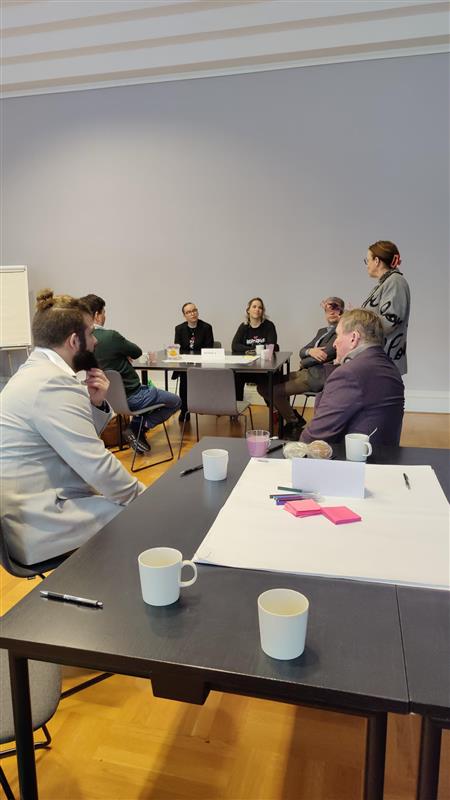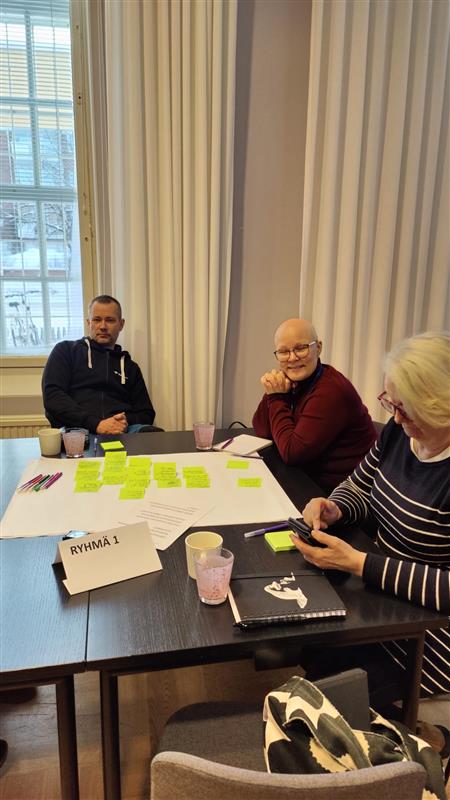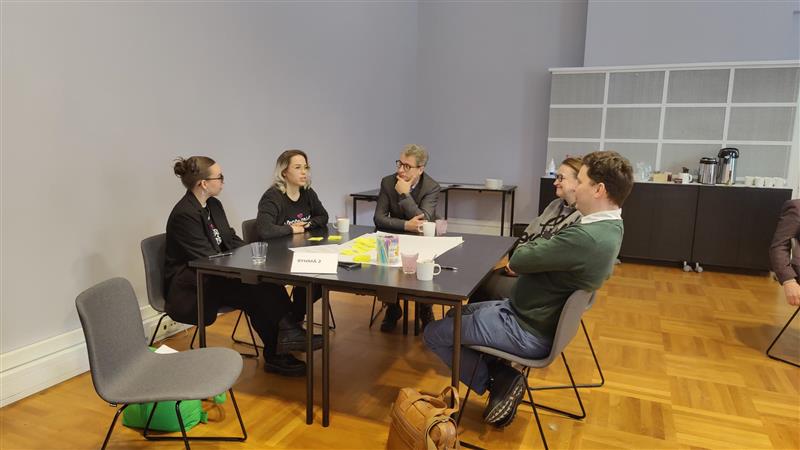The future evokes both hopes and fears. How should we approach changes, such as evolving technology? How can we ensure a sustainable future? And how do we maintain optimism, empathy and dialogue?
These were some of the themes discussed in the BestBeloved Museum’s Heritage Future Workshop at the beginning of February. The workshop included members of the city of Oulu’s Well-being, Culture, and Sports Board along with museum professionals. Researchers Pauliina Latvala-Harvilahti and Maria Granlund from the University of Turku’s Futures Research Centre led participants in engaging discussions about the future.

We can influence the future
The workshop emphasized the idea that there is no single predetermined future, but rather multiple possible futures influenced by our choices and actions. This creates both opportunities and responsibilities. What opportunities and responsibilities does the museum have as a builder of futures? How can the museum be involved in instilling hope and confidence in the future?
Changes provoke fears and anxieties. Concerns related to technology and artificial intelligence were highlighted in the Heritage Future Workshop, but so were hopes. To harness the benefits of technology, we must be able to trust it. New technological methods are often initially feared or rejected. Even the bicycle was initially viewed with skepticism, but over time, it has become a beloved means of transportation in Oulu. How can we embrace change and the unknown instead of resisting it?
The workshop also brought up fears about the kind of connection we will have with others in the future and how we can preserve human interaction. Key skills highlighted included empathy, listening skills, dialogue, and respecting diverse opinions without polarization. To address fears related to climate and the environment, the workshop suggested tapping into the knowledge of past generations, which we could use to build a more sustainable lifestyle. This is an example of a heritage future that the museum can bring to light in its exhibitions and activities

Museum can create hope for the future
Speaking of museum superpowers, these are the typical characteristics and abilities that museums possess, enabling them to solve societal problems, build identities, facilitate community participation, and convey information. Creating hope for the future requires collaboration between the museum and its users. The BestBeloved Museum project by the Northern Ostrobothnia Museum emphasizes participation and the museum’s active agency in its own community. Together with its users, the museum can increase awareness of the past and contribute to creating more hopeful and sustainable futures. The museum can help nourish imagination and envision different possible and impossible futures. It can inspire creation and participation, as well as help amplify the voices of individuals and communities and make their histories visible. The museum can foster a sense of community and belonging and dismantle prejudices. Understanding our history and where we come from can better guide us towards desired futures. All of this can increase optimism about the future and create a sense that we can influence and participate in shaping the future ourselves.
The museum can also assist in addressing difficult topics such as fears and pains. In collaboration with the Oulu Art Museum, the Northern Ostrobothnia Museum has created the Pain Exhibition, where the subject is approached through art and suitable museum objects. The Pain Exhibition is open at the Oulu Art Museum until August 25, 2024.
By utilizing its superpowers, the museum can play a role in creating hope for the future and help address associated fears. By focusing on the future, as done in the BestBeloved Museum workshops, the museum can actively involve different communities in future planning and harness various skills and actions to support our hopes for the future.
Author: Veera Sippola, BestBeloved Museum Intern
Photos: Heini Harju-Könnö
